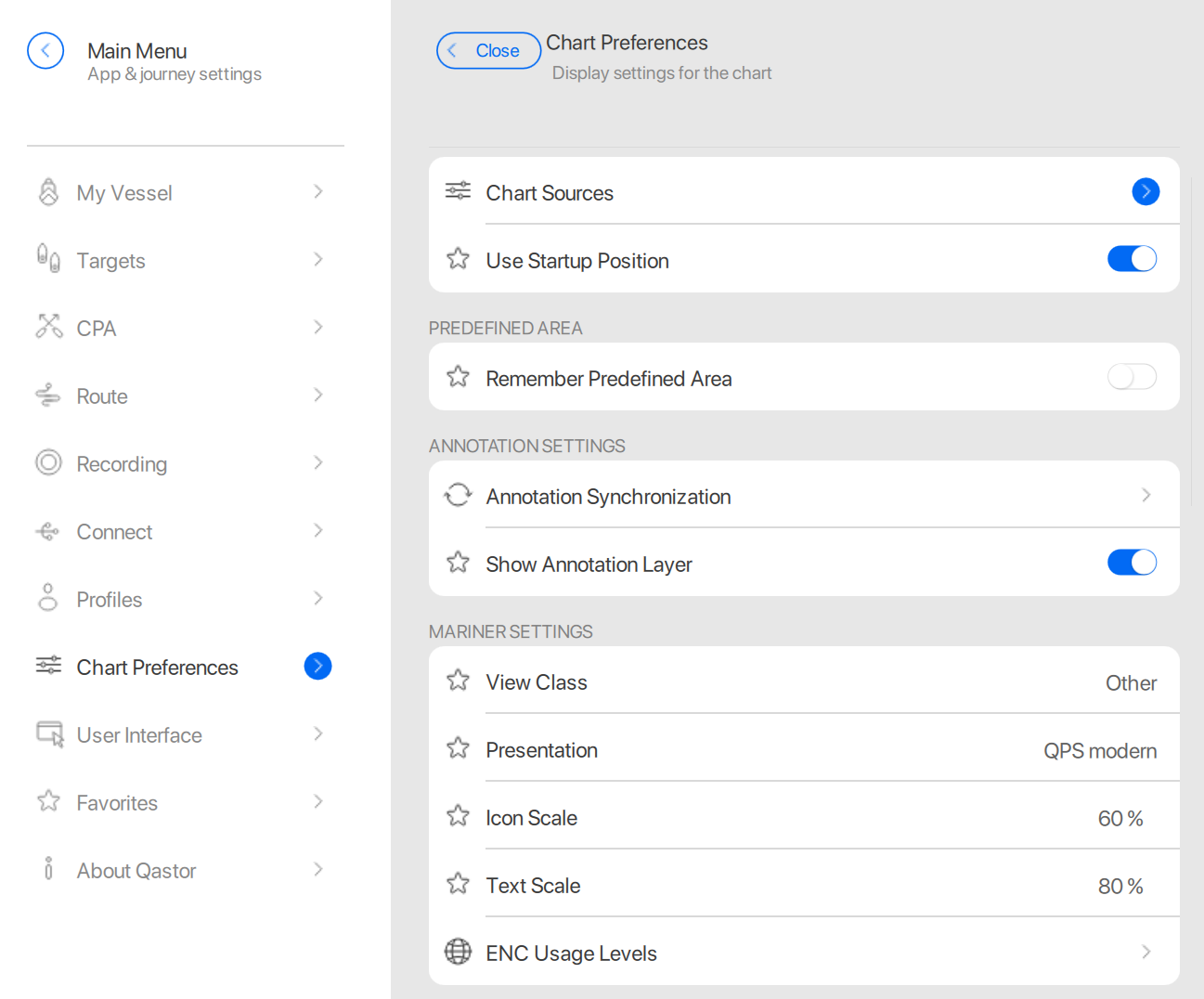Qastor Release Notes - 3.9
We are pleased to announce the latest Qastor release, release 3.9.
In this release, we introduce the following features:
Splash screen during Qastor startup
When Qastor is starting up a splash screen will be displayed on Windows. This is to indicate that the program is running.

A fourth column added to the target list
A fourth column has been added to the target list in the side panel. Most items only require a couple of numbers which can be fitted in smaller columns. The first column is wider than the three other ones and can be used for the name of the vessel.
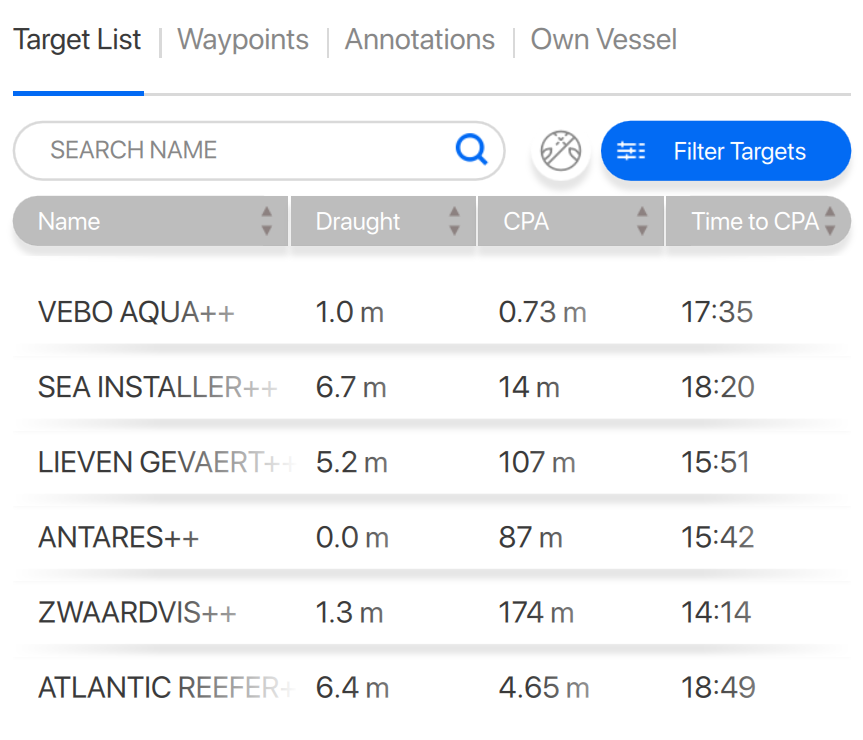
Vessel shape selection
A new feature has been added to the Voyage Menu called Vessel Shape Name. From this menu, it is possible to select 8 different vessel shapes as used standard in the Rotterdam Rijnmond area.
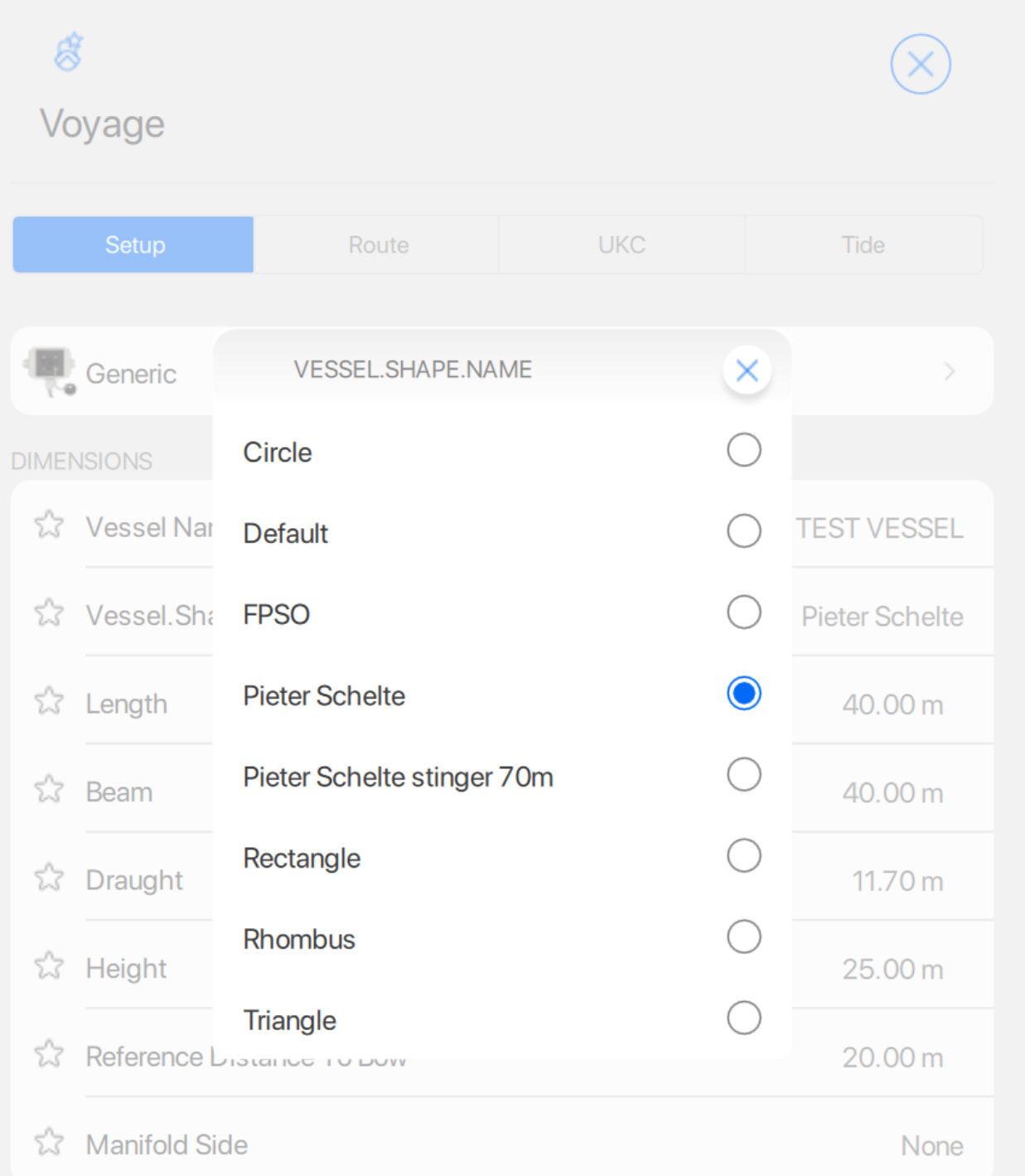
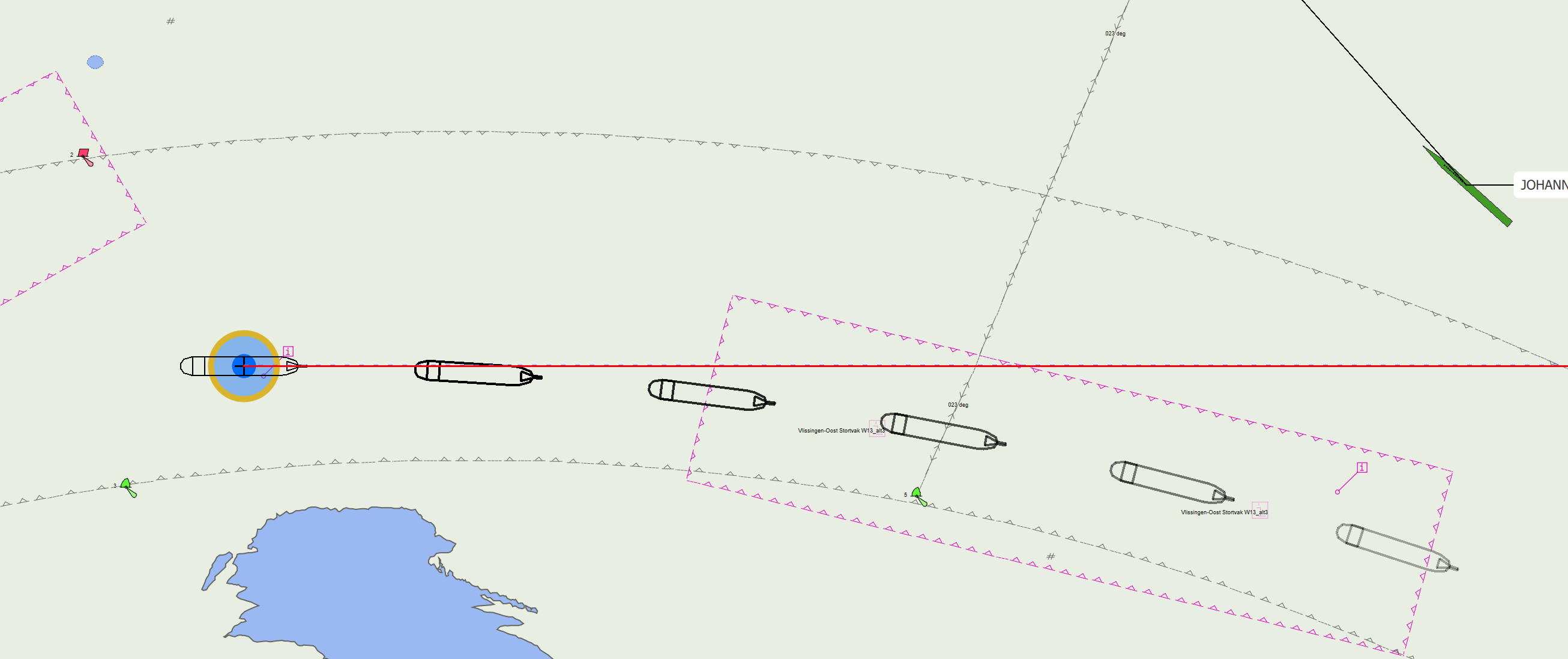
The user-defined vessel shape will also be displayed in the prediction and vessel shape trail. This vessel shape is not (yet) shown in the graphical vessel setup. Vessel shapes are in XML file format (similar to Qastor 2.5) and can be found in:
Windows: C:\Users\your username\Documents\Qastor\My Vessel Shapes
iOS: On My iPAD/iPHONE > Qastor > My Vessel Shapes
Target list sorting displayed
The target list sorting ascending or descending is now indicated in the column by a blue color of the up- or down icons
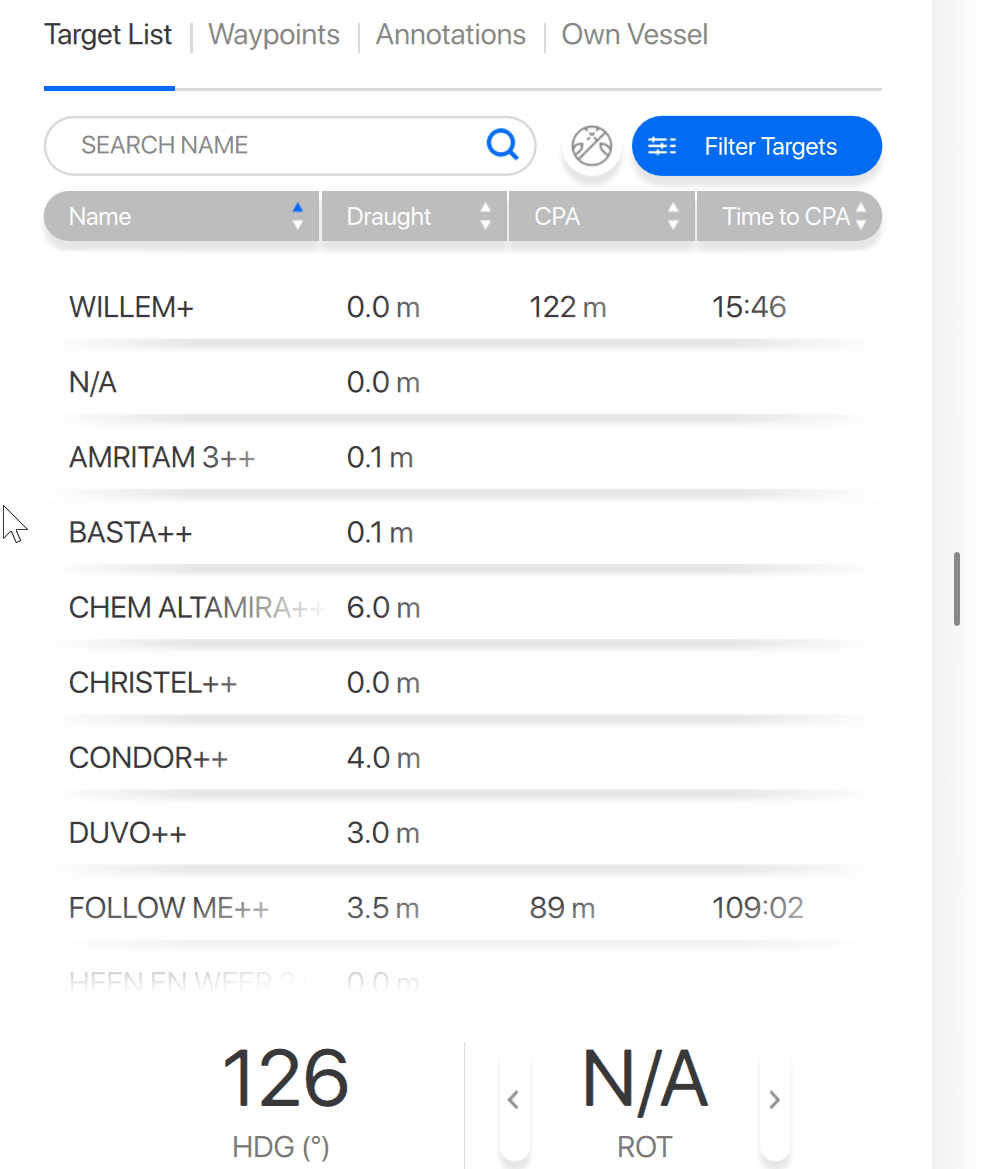
Isolate hidden targets in the target list
Before hidden targets could only be added to the list of all targets or CPA targets. Hidden targets can now be filtered to a hidden target list only.
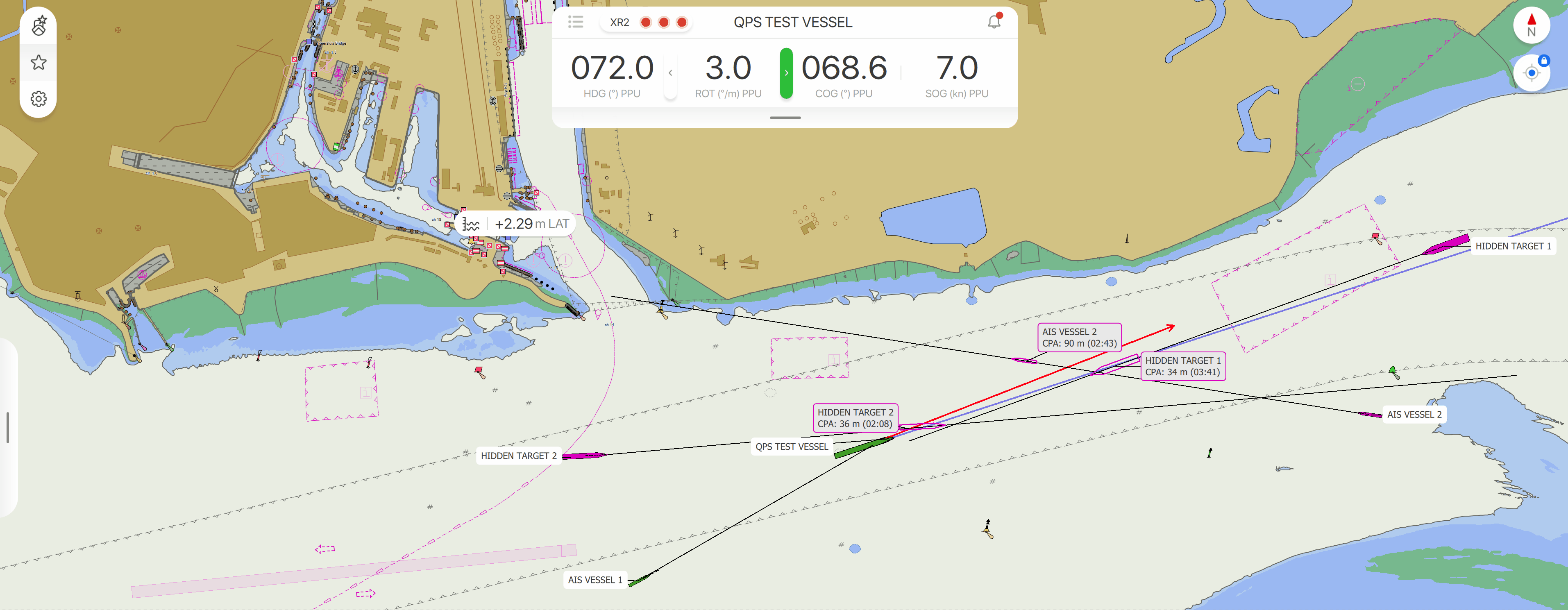
Save your own vessel with name and extra information
It is now possible to add extra information to a vessel file using text and attachments similar to Annotation attachments. A searchable list is used if multiple files are used. Attachments are stored in a subfolder with the name of the vessel in the Qastor My Vessels folder. Attachments can be deleted from within Qastor.
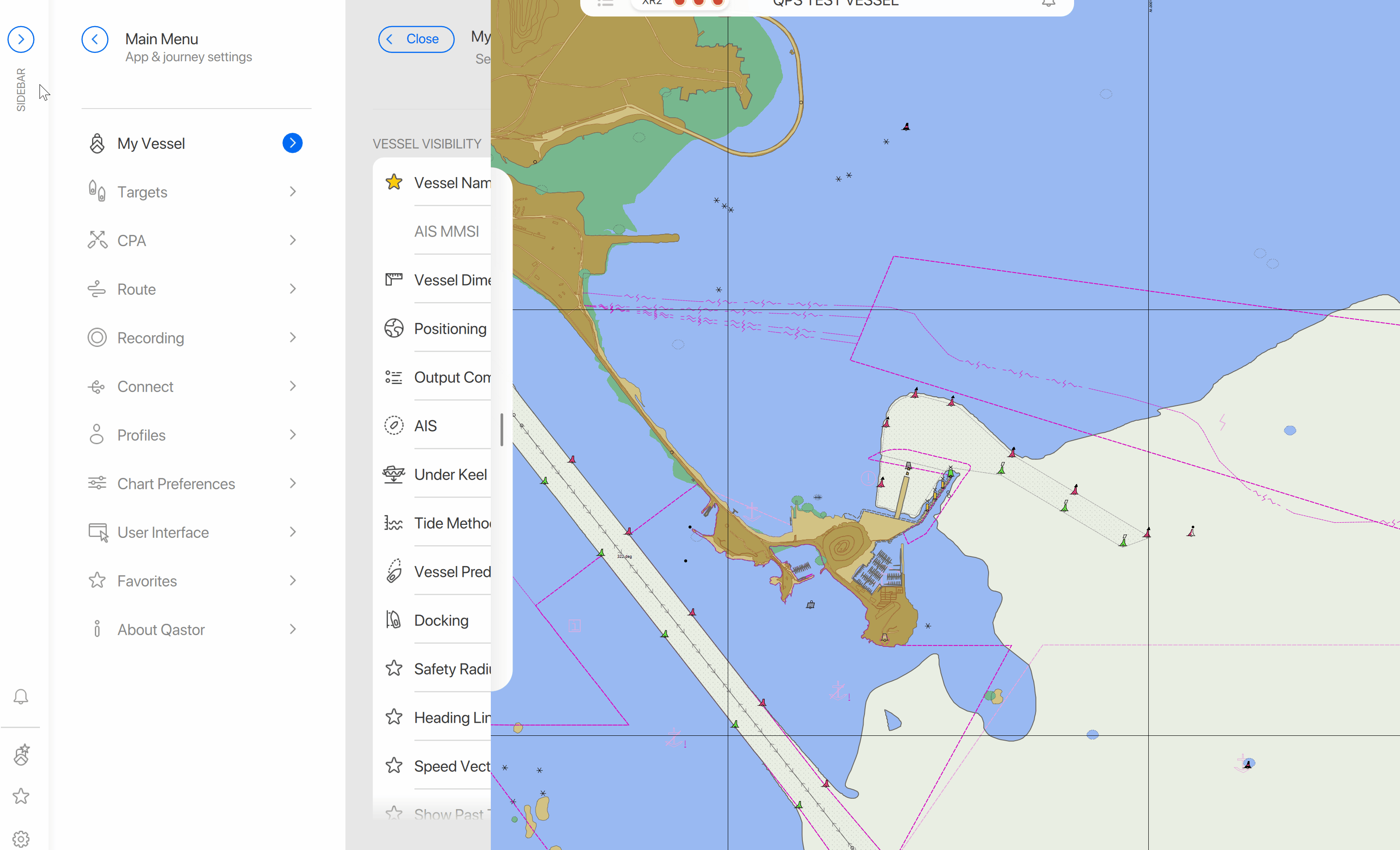
Start Qastor always with a specific profile
The option to start with an active profile setting is now changed to Startup Mode in the Load & Save settings of Qastor profiles. This means Qastor can now be set to always start with a specific profile not just the active one.
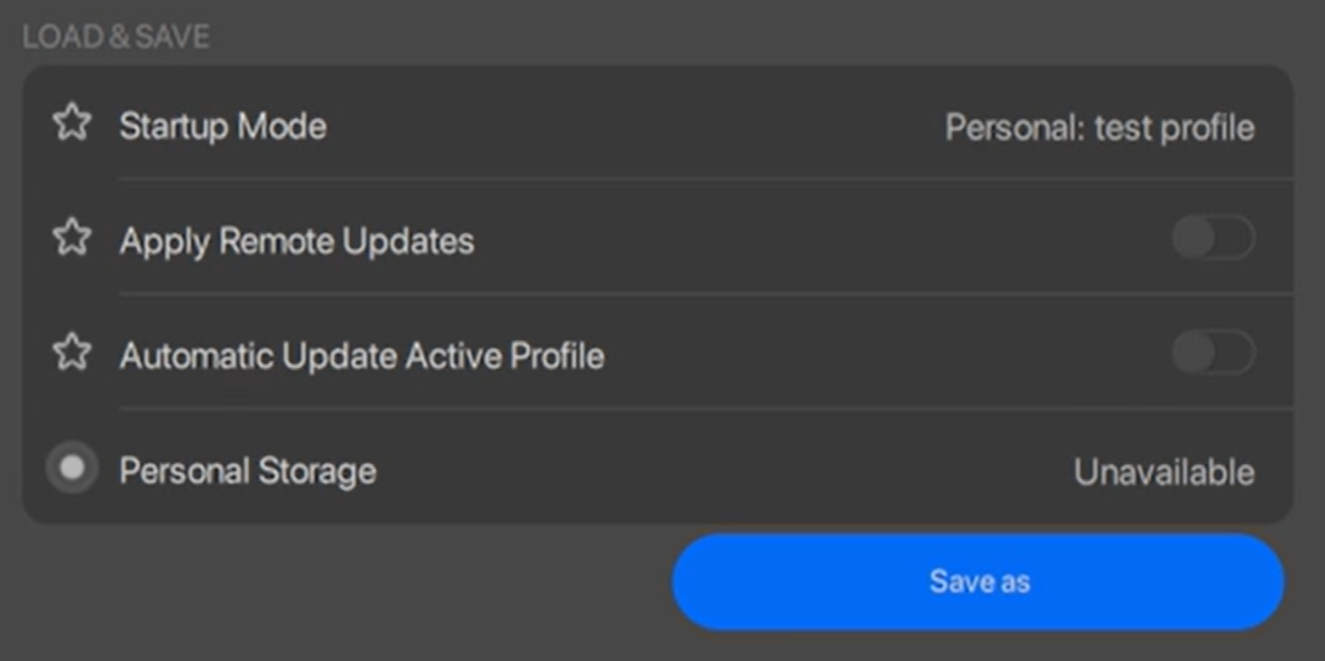
Support Navigandi Orbis PPU
The Navigandi Orbis PPU unit is supported in Qastor. It has a fixed IP address and the port number can not be changed in the Position Device setup. The digits in the settings are greyed out to make the user aware of this.

Heading antenna location messages Navigandi Orbis PPU
The Navigandi Orbis PPU requires a message sent from Qastor to the unit about the offset of the Heading antenna to the Position antenna.
If no offset is required (None) the unit still expects a 90-degree offset similar to the Starboard position of the HDG pod. This is now correctly implemented in the $PNVSTP,090,0*16 message.
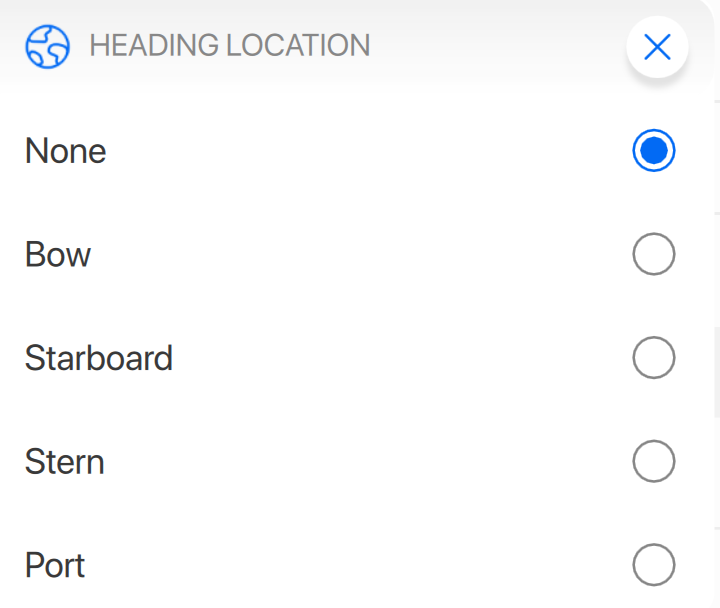
Option to save the vessel dimensions automatically.
It is now possible to automatically store the vessel properties in a vessel file.
There are three possible settings:
Only Manually - Vessel properties will not be automatically saved, and the user will need to save them manually
Use Vessel Name - Vessel properties will be automatically saved to a file with the name of the vessel
Ask On Name Change - Vessel properties will be automatically saved to the active file. However, if the vessel's name is changed, the user will see an alarm with a message requesting them to confirm which file should be used. Once the user selects a file, this message goes away.
Always Overwrite - Vessel properties will always be saved to the active file
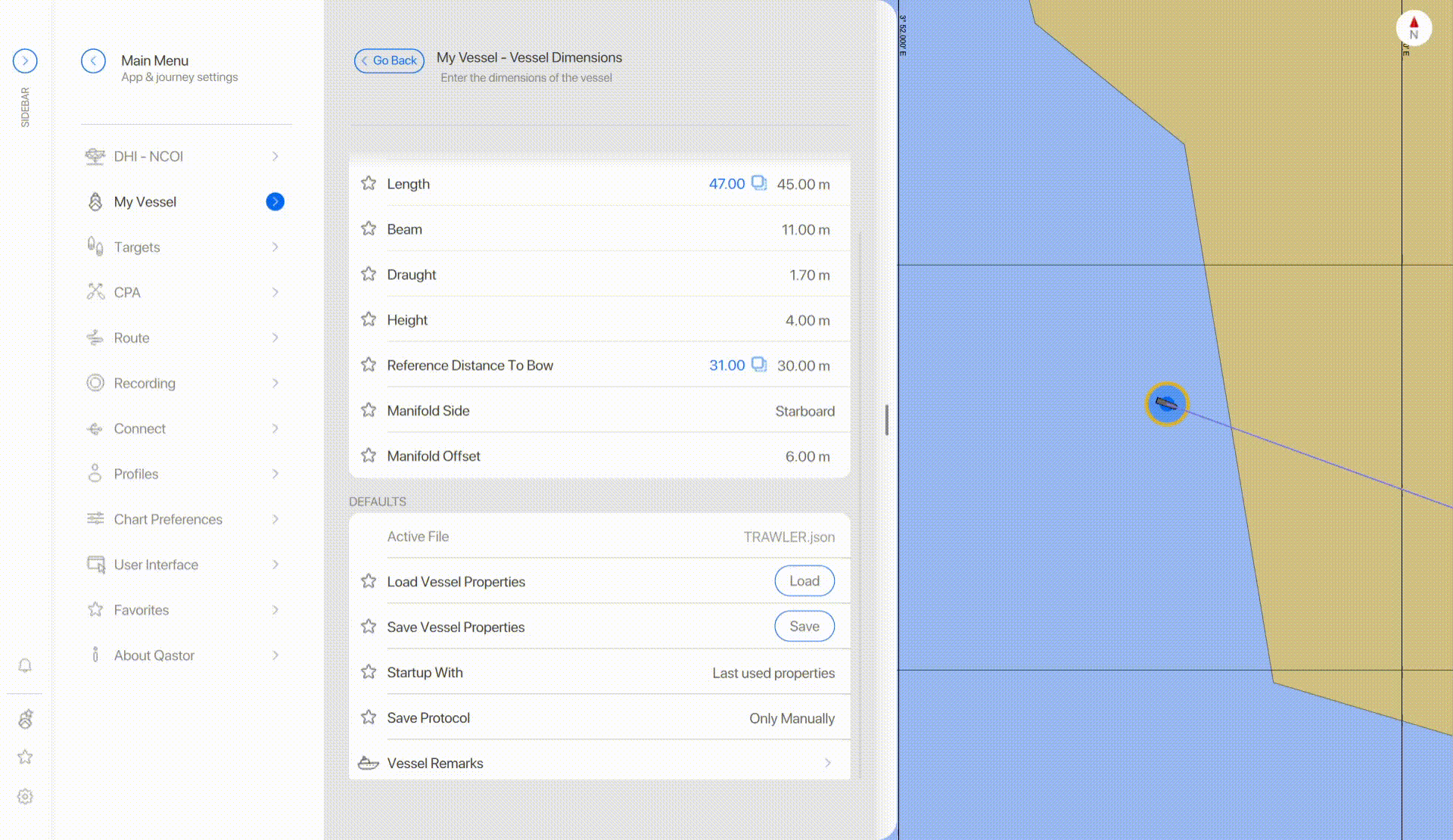
Support for Navicom CanalPilot device.
Navicom Dynamics’ Precision Navigation system, the CanalPilot, is the ultimate tool for total situational awareness to ensure safe navigation of vessels through the Panama Canal. More information about this device can be found here: https://navicomdynamics.com/en/products/canalpilot.
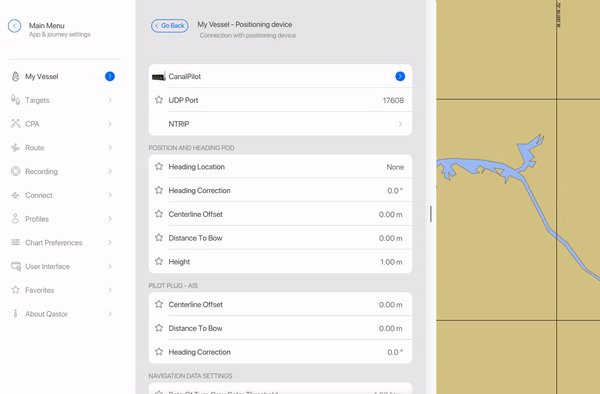
DHI NCOS overlay functionality.
The NCOS overlay is an integral component of the vessel traffic management system known as "NCOS Online," which is offered by Seaport OPX, a subsidiary of the DHI Group. Specifically, the NCOS overlay serves as a Dynamic Underkeel Clearance overlay within the Qastor charting system. Its purpose is to visually represent the go- and nogo-areas for a given plan.
When using the DHI NCOS overlay in Qastor, please update the Connect server to the latest version.
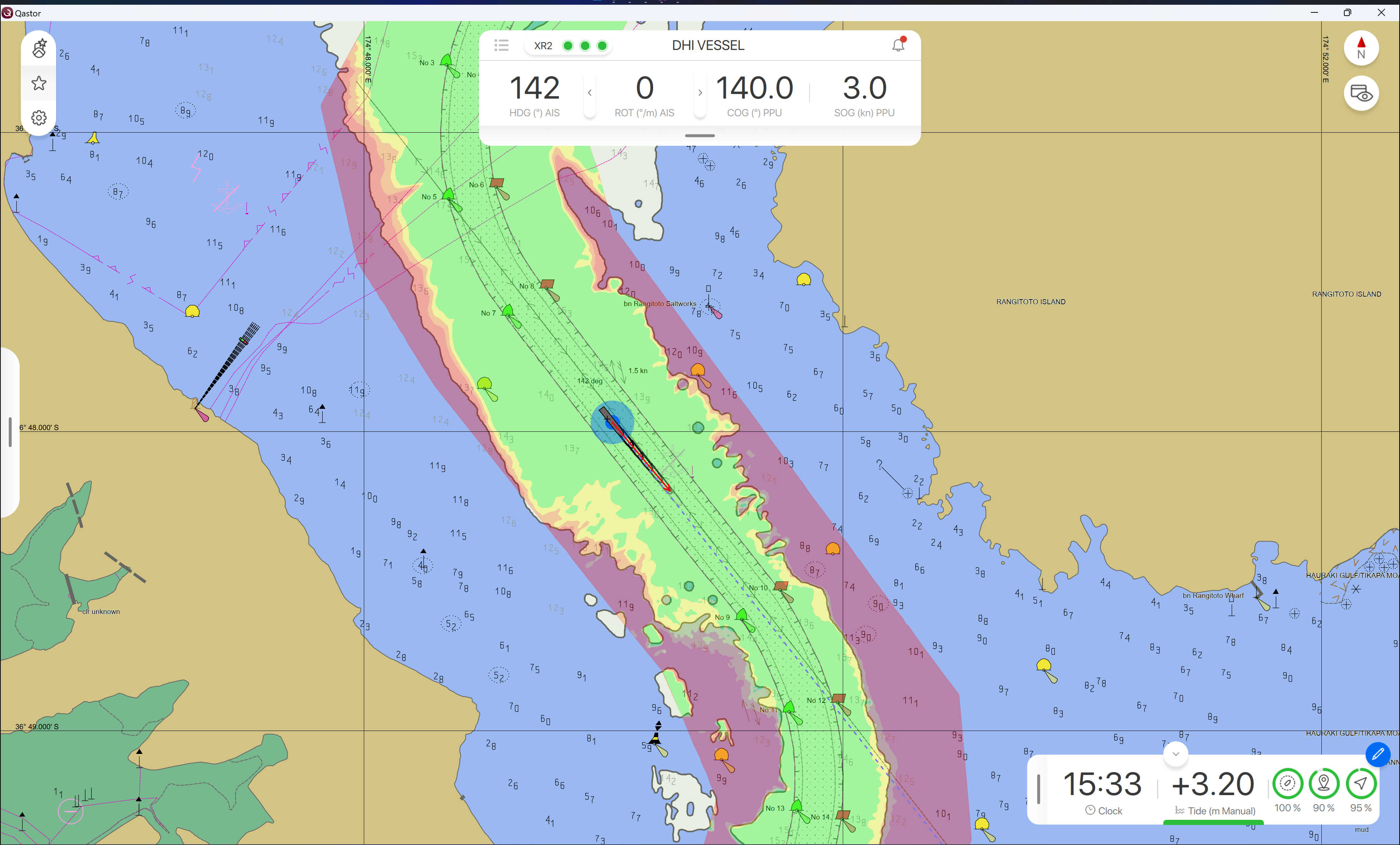
The colors in the sensor status do not change when disconnecting.
When the PPU was disconnected from the software, the battery messages were dismissed but the green dots on the top remained green.
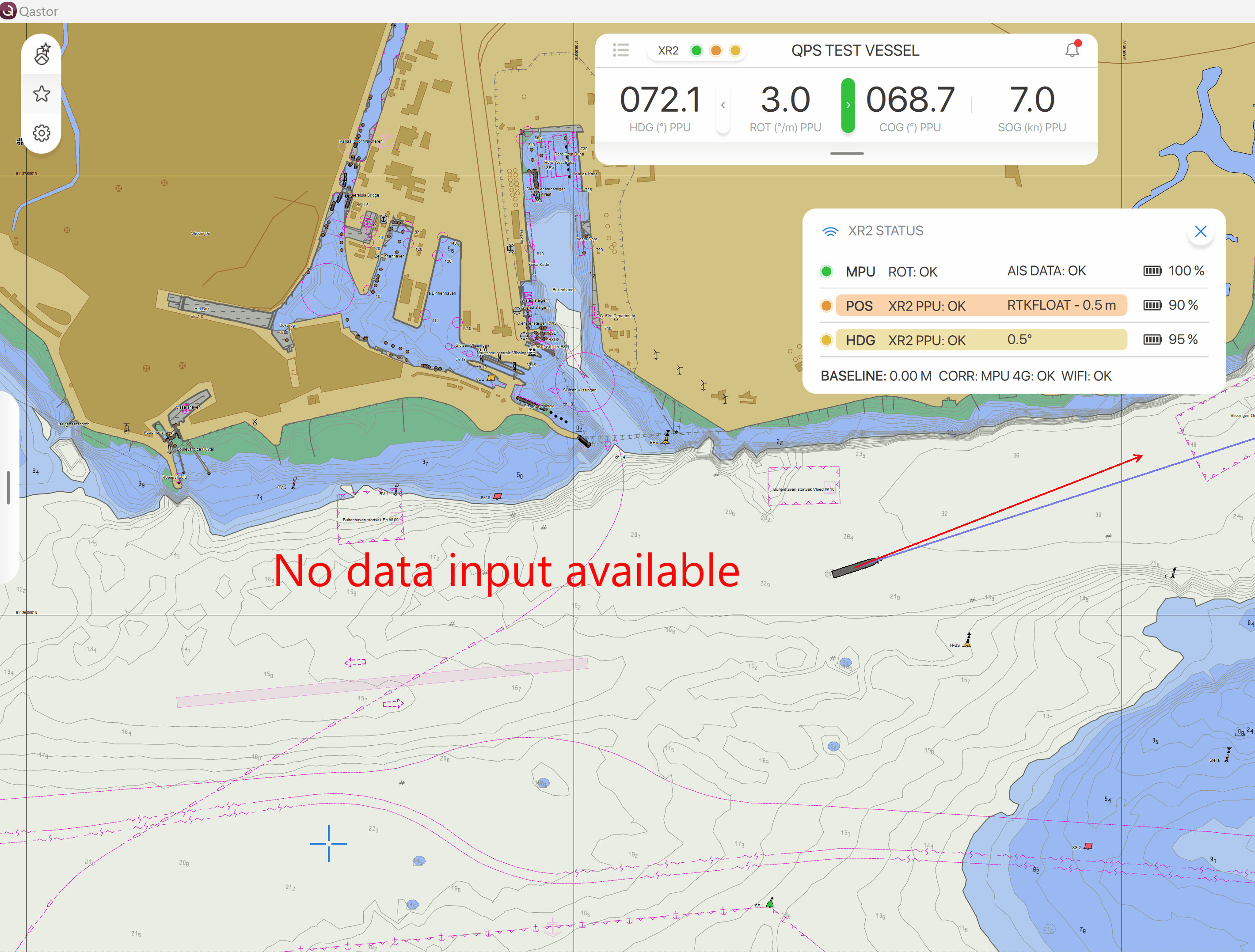
The sensor is not displayed correctly in the top bar.
Qastor should display the sensor used in the top bar, not only when NMEA pos. data is received from the unit. Virtual Boarding should not be displayed in combination with the ChannelPilot and GyroPilot, they rely on a VDM input for positioning and HDT and ROT data but this should not be considered virtual boarding.
Image 3: No device is selected.
Image 4: A vessel is virtually boarded.
Image 5: XR2 without scenarios active and heartbeat alarm warning.
Image 6: XR2 without scenarios active.
Image 7: XR2 with scenarios active.
Image 8: Channelpilot.
Image 9: ADQ2
The setting ‘hide sensor status in the topbar when virtually boarded’ is removed from Qastor.
Switch off individual chart items
It is now possible to turn on/off the following items in the chart:
Precautionary areas (PRECARE) including dredge areas (DRGARE)
Restricted areas (RESARE)
Anchorage area (ACHARE) information
Pipeline Submarine/On Land (PIPSOL)
Railway (RAILWY)
Nautical Publication Information (M_NPUB)
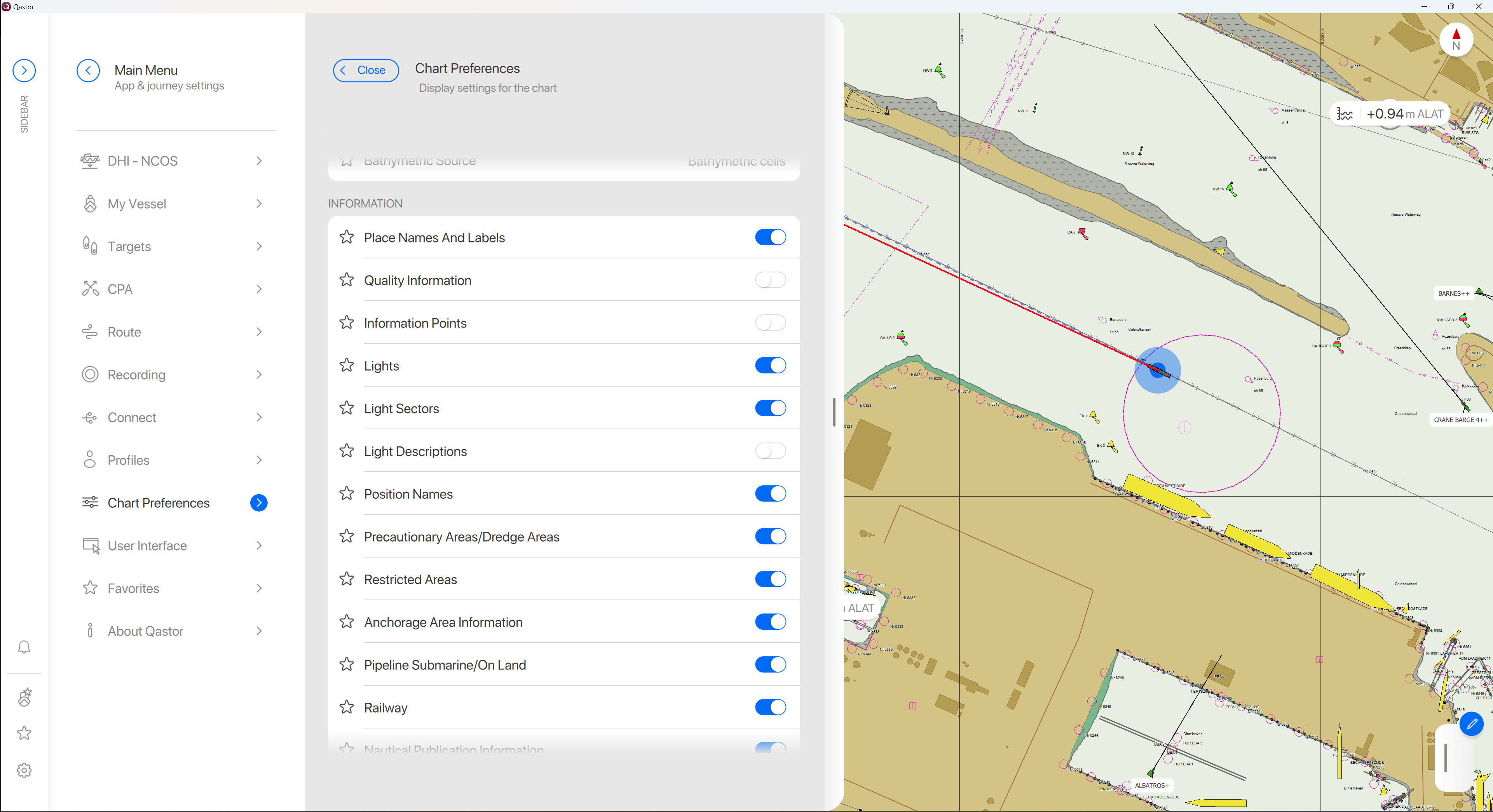
Ability to delete the startup position
Once a startup position is set, it can now be deleted:
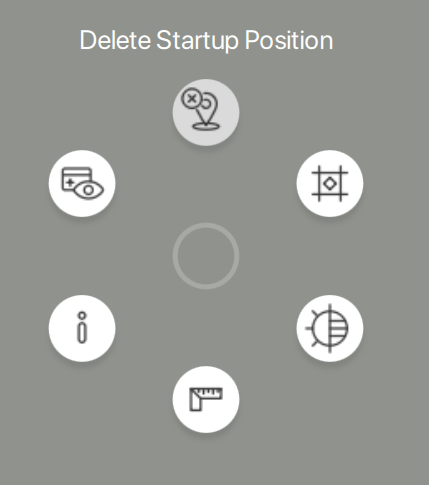
The usage of a start position can also be disabled in the settings:
